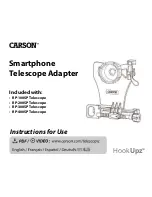
Section 2
Functional Description
9
FT205EV Wind Sensors
– User Manual
2.2 Wind Speed Calibration
The wind sensor is calibrated in our wind tunnels before dispatch. As the sensor has no moving parts, there is
no need to recalibrate a sensor over its lifetime as no measurement degradation will occur. The sensor
’s compact
strong monolithic shape is designed to prevent accidental transducer movement or damage. FT Technologies
’
calibration procedure and wind tunnels are designed to give a calibration profile that is within the accuracy limits
set in the product technical specification (see Section 2.1). Periodically
the accuracy of FT’s wind tunnels are
compared with the accuracy of an independent wind tunnel to ensure that no drift has occurred.
In exceptional circumstances users may wish to apply additional calibration factors. The sensors have an option
to set a User Calibration Table, which can modify the wind sensor
’s wind speed output (see Section 6.4.23).
The User Calibration Table can be programmed with up to 64 correction factors which are maintained in non-
volatile memory. When enabled, the uncorrected wind speed output is adjusted according to the stored User
Calibration Table records using linear interpolation. The adjustments are applied to wind speed readings
regardless of wind direction.
2.3 Wind Speed and Direction Filtering
It is important that the system does not rely exclusively on a single wind reading for any control decision. A single
reading may be inaccurate due to measurement error, turbulence, corruption or interference. It is recommended
that an average of wind readings is used. In addition if 100% data availability is required then a second FT sensor
or alternative wind sensors should be fitted in addition.
The sensor has optional internal filtering available. This is a digital finite impulse response (FIR) filter, which works
by calculating the moving average of a fixed number of previous readings. If filtering is being applied externally,
the sensor
’s output filters can be disabled. If filtering inside the sensor is preferred, the length of the averaging for
both wind speed and direction can be independently set (See Sections 6.4.13 and 6.4.14).
Figure 2: Examples of FIR Filtering
It is recommended to use average readings to reduce the effects of air turbulence.










































